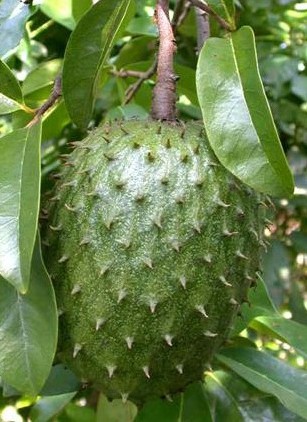Custard Apple
(Anonaceae)



Pick fruits with a lighter green or yellowish-green color with expanded scale-like skin. Ripen the fruit in a dark place. Ripe fruit has soft skin, but over-rip fruit turns darker in color.
Mature fruits should be kept on racks in a cool place or refrigerator. Fruits ripen quicker and become very soft when kept in a dark place. Segments of the fruit and juice can be frozen for future use.
Smithsonian Tropical Research Institute


Custard apples are cultivated in different varieties in the Pacific. The two most common are the soursop and sweet sop (Tropical Home Gardens, 1990). They are generally green in color. The fruits have white flesh with custard-like consistency and dark brown seeds. The slightly acidic flavor is sometimes described as a cross between a strawberry and pineapple (Stanton, 1986).
1. Soursop (Anona muricata)
Soursop is medium-dark green, irregular and oblong in shape, with shiny curving spines. It is much larger than the sweet sop.
2. Sweet sop (Anona squamosa)
Sweet sop is also referred to as custard apple but is smaller and has no spines.
82).